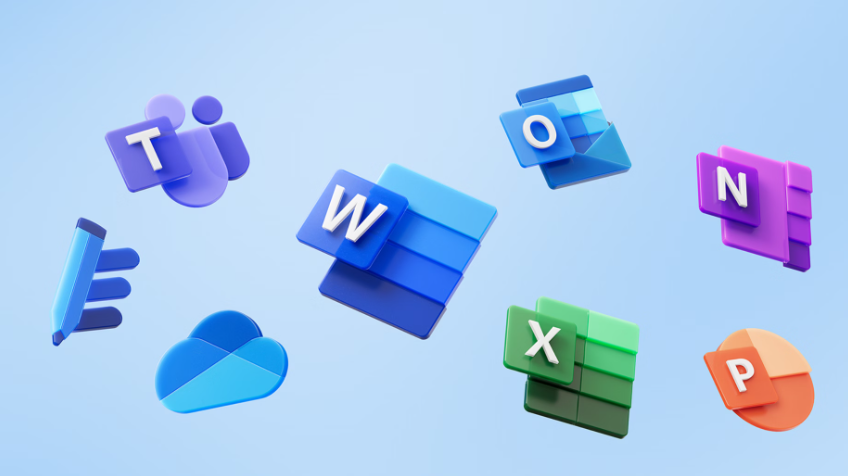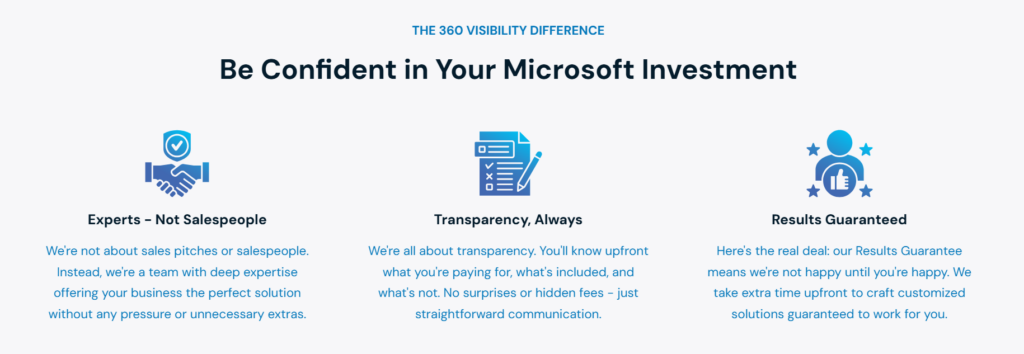Companies that excel at efficiency are 30% more productive than their peers and achieve 20% higher profitability. While enhancing efficiency is needed to stay ahead, businesses often face challenges. These can be related to automated processes, centralized data management, cloud adoption, AI integration, and security. Effectively addressing these issues with dedicated Microsoft Dynamics partners can boost productivity, reduce costs, and increase profitability. Here are six business efficiency examples on how Microsoft solutions like Azure, Copilot, Dynamics 365, Microsoft 365, and Power Platform can help.

1) Automate Key Processes
Microsoft Power Automate allows businesses to automate repetitive tasks and workflows, integrating seamlessly with other Microsoft solutions to boost efficiency across departments, streamline operations, reduce errors, and free up valuable time. For example, automating invoice processing or customer support tasks can save time and increase accuracy.
Without automation, organizations may continue to face inefficiencies and errors, negatively impacting productivity and effectiveness.
2) Centralize Data Management
Data silos and inconsistent information can impede decision-making and efficiency. Microsoft Dynamics 365 offers ERP (Business Central) and CRM (Sales) solutions that integrate all business functions into a single platform. This unified approach eliminates the challenges of data inconsistencies and fragmented information. Teams have access to consistent, real-time data, enhancing collaboration and informed decision-making. It also integrates with Power Platform, allowing for custom app development and workflow automation that’s tailored to specific business requirements. Without such a solution, businesses may struggle with disjointed systems and processes.
3) Use the Cloud for Flexibility and Scalability
Traditional on-premises systems can restrict flexibility and lead to high maintenance costs. It can also limit business growth and adaptability. Microsoft Azure provides scalable cloud infrastructure that supports various business needs, from data storage to advanced analytics. Moving to Azure allows businesses to scale operations efficiently, reduce IT costs, and enhance collaboration.
4) Leverage AI
AI can significantly boost efficiency by automating complex tasks and providing predictive insights. Microsoft Copilot integrates AI capabilities directly into Microsoft 365 applications, offering intelligent recommendations and automating routine tasks. All of this improves productivity, efficiency and helps teams focus on more important tasks. Businesses that do not utilize AI may face slower decision-making processes and miss opportunities for improvement.
5) Strengthen Security
Microsoft 365 and Azure offer extensive security solutions to protect against data breaches and ensure compliance with regulations. Features such as multi-factor authentication, data encryption, and advanced threat protection help safeguard business information. Without strong security measures, businesses risk costly breaches and regulatory penalties, which can affect their operations and reputation.
6) Standardize Documentation
Microsoft 365 and SharePoint can also create and help your business manage standardized templates, documents, and workflows. These tools provide a centralized platform for storing and accessing important information, ensuring that all team members follow uniform procedures. Without standardization, businesses may face fragmented processes and inefficiencies.
Let Us Be Your Microsoft Dynamics Partners
Microsoft solutions such as Azure, Copilot, Dynamics 365, Microsoft 365, and Power Platform, equip businesses with the tools to tackle efficiency challenges and drive performance improvements. Whether you’re looking to streamline operations with Dynamics 365’s ERP capabilities, enhance decision-making with AI-powered insights from Copilot, or to boost collaboration through Microsoft 365, these platforms empower teams to work smarter, not harder.
In addition, our Cloud Infrastructure Advisory services provide tailored support, offering strategic guidance to align your cloud architecture with your company’s long-term goals. From planning to deployment, Microsoft Dynamics partners work with you to optimize your infrastructure. Through collaboration, and by offering the right Microsoft solutions, we ensure scalability, security, and cost-efficiency.
Let’s work together to address inefficiencies, automate key processes, and free up valuable time. As your Microsoft Dynamics partners, we want you to focus on what matters most—growing your business and delivering exceptional value to your customers.




